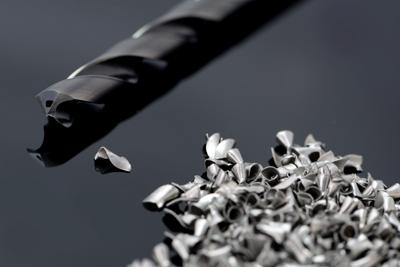
OSG has introduced the new EXOCARB WDO-SUS drills for machining stainless steels and titanium alloys.
The WDO-SUS drills were specifically developed to combat the common issues that occur when machining stainless steels and titanium alloys such as work hardening, elongated chips, low thermal conductivity and welding on the tool.
One of the prominent features of the WDO-SUS drill is newly designed MEGA COOLER coolant holes. They provide improved coolant flow for improved chip evacuation and reduced heat generation. The flute geometry and sharp cutting edge produce compact cutting chips that prevent chip packing.
Also, the WDO-SUS drill provides stable regrinding and prevents work hardening in additional manufacturing processes by reducing margin wear with its unique margin shape and OSG's WXL coating.
With these features, the WDO-SUS drill has reportedly demonstrated double the tool life of the competitor's tool by surpassing 3,100 linear inches even when drilling difficult-to-machine duplex stainless steel.
Contact Details
Related Glossary Terms
- alloys
alloys
Substances having metallic properties and being composed of two or more chemical elements of which at least one is a metal.
- coolant
coolant
Fluid that reduces temperature buildup at the tool/workpiece interface during machining. Normally takes the form of a liquid such as soluble or chemical mixtures (semisynthetic, synthetic) but can be pressurized air or other gas. Because of water’s ability to absorb great quantities of heat, it is widely used as a coolant and vehicle for various cutting compounds, with the water-to-compound ratio varying with the machining task. See cutting fluid; semisynthetic cutting fluid; soluble-oil cutting fluid; synthetic cutting fluid.
- hardening
hardening
Process of increasing the surface hardness of a part. It is accomplished by heating a piece of steel to a temperature within or above its critical range and then cooling (or quenching) it rapidly. In any heat-treatment operation, the rate of heating is important. Heat flows from the exterior to the interior of steel at a definite rate. If the steel is heated too quickly, the outside becomes hotter than the inside and the desired uniform structure cannot be obtained. If a piece is irregular in shape, a slow heating rate is essential to prevent warping and cracking. The heavier the section, the longer the heating time must be to achieve uniform results. Even after the correct temperature has been reached, the piece should be held at the temperature for a sufficient period of time to permit its thickest section to attain a uniform temperature. See workhardening.
- stainless steels
stainless steels
Stainless steels possess high strength, heat resistance, excellent workability and erosion resistance. Four general classes have been developed to cover a range of mechanical and physical properties for particular applications. The four classes are: the austenitic types of the chromium-nickel-manganese 200 series and the chromium-nickel 300 series; the martensitic types of the chromium, hardenable 400 series; the chromium, nonhardenable 400-series ferritic types; and the precipitation-hardening type of chromium-nickel alloys with additional elements that are hardenable by solution treating and aging.

